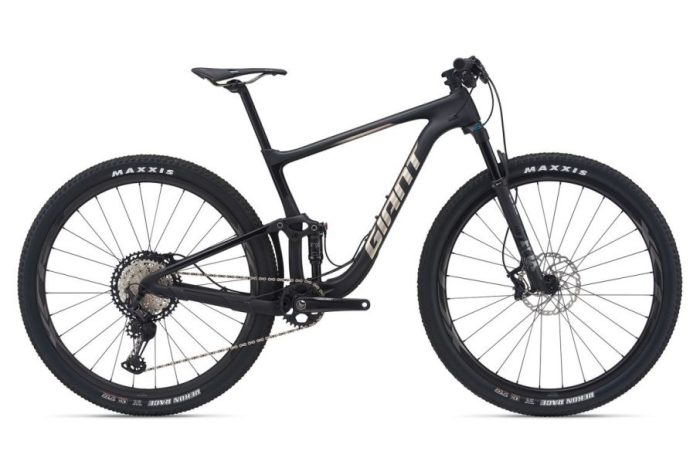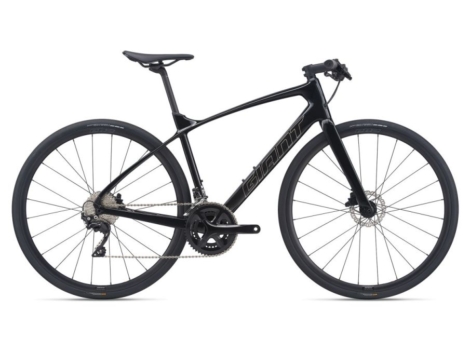Drop bar widths to suit your riding style
What is drop bar?
Bicycle handlebars known as “drop bars” have a flat section in the center and a curved bend that circles forward and downward on either side. Drop bar brakes are connected at the front of the drops for a completely different hand position than flat bar brakes, which are parallel to the bar.
The bike handlebars are among the most crucial pieces of your bike, but unfortunately, you’re stuck with what you get unless you want to make your own.
Drop bars let you kneel down to lessen drag, in case you stumbled onto this post and don’t know what they are. Your speed and effectiveness will increase significantly in this posture. This is beneficial whether riding downhill, along a long flat stretch, or into the wind.
Because there are so many different types and sizes of bars, choosing the proper one might be difficult if you don’t know what to look for. There are countless possibilities, from reach and width to flair.
How To Choose Width Of Handle Bars:
Although it’s commonly believed that handlebars should equal shoulder width, there’s actually too much emphasis placed on this idea.
It’s often said that handlebars should match shoulder width, but in reality, too much emphasis is placed on the significance of shoulder width when choosing a bar. While it may be a good starting point (as we’ll discuss later), sizing handlebars using this method is unlikely to produce an ideal setup for the majority of riders.
For instance, off-road handlebars have widened in recent years as riders seek more stability in rocky terrain. The same is true for riding on the road, where a broad handlebar slows steering and can give a novice rider stability and confidence, regardless of size or shoulder breadth.
Riders wishing to tackle gravel tracks, rocky roads, or varied terrain may also search for handlebars that are a little broader or with curved drops (common on gravel bikes).
Riders who have shoulder stress, neck pain, jaw pain, or hand weariness as a result of their “death grip” while using narrow bars may also benefit from using wider bars. This is especially noticeable on many women’s bikes, which frequently come standard with narrow handlebars to accommodate riders with thin shoulders.
Narrow handlebars, however, can have certain advantages for riders who are more seasoned or who have a thinner grip by nature. You might think about attempting a narrower bar if you notice that your wrists splay outwards toward the brake hoods. Additionally, handlebar width can affect your aerodynamic drag. In general, faster equates to narrower.
Dimension Of Your Drop Bar:
Each bar will also have stated drop and reach measurements, or, in other words, how low the bottom of the bar comes in relation to the clamped part in the centre and how far out the drops stretch before curving downward. But those measurements assume that the bar is mounted in a neutral rotational position, and deviating from that can have a considerable impact on how the handlebar feels.
Handrail Width:
The bar’s usable breadth, measured from the drops’ centers. This is typically listed in 2 cm intervals, as you will discover. When picking bar width, shoulder breadth is a crucial factor to take into account; the wider your shoulders, the wider a bar you should choose.
However, riding a bar that is excessively wide might shift pressures typically absorbed by your arms up to your shoulders, leading to a sore neck or shoulders. Wider bars can also allow for better bike handling, especially on hard descents, as well as more torque over the bike in a sprint.
Reach:
This is the distance between the handlebar’s stem and bend’s center. When riding on the hoods, the reach may have an impact on how your upper body is positioned, but not how your torso is positioned in the drops or on the tops. Typically, reach is between 80mm and 85mm.
Drop:
The depth of the drop in the bar is measured from the center of the flat top part to the center of the bar. With a small drop, your body position transitions from the hood to the drop more gradually than it would with a large drop of 130mm or more.
Drop Design:
The ride characteristics and aesthetics of a road handlebar are determined by the shape of the drops. Consider how often you’ll be using this section of the bar, as the more aggressive you’re riding style, the more time you’ll probably spend “in the drops.”
Ergonomic drops are the most comfortable alternative for riders, yet some people may prefer classic drops because of their wider range of hand positions and more rounded curve.
Pedal Position:
There are three different hand positions available on road handlebars. Each of these postures has its own advantages to increase your comfort and power output in addition to offering a distinct riding position as a break for your hands. However, a good rule of thumb is to position the bars such that their faces are slightly downward and pointed in your direction. But let’s get started with the techniques so you can decide which is most effective for you.
In The Drops:
This describes the alignment of your hands on the bar’s lower portion. Your body is no longer in the path of the wind from this position, which improves your aerodynamics. From this position, you’ll also benefit from other advantages for riding, such as a lower center of gravity, increased leverage over the brake levers for increased stopping power, and generally better sprinting power due to the increased leverage you can obtain over the bike. It’s recommended to avoid being in this posture for too long because it will strain your back and demand core strength to maintain.
Within The Hoods:
You’ll spend the most of your riding time in this posture. You have an aerodynamic advantage from here and can quickly reach the brakes and levers. You will also notice that you will be much more balanced in this posture because you will be fitted to the bike in this position.
Over The Top:
With this one, you should put your hands flat on the bar and closer to the stem. It’s more difficult to generate effective power production in this posture because it’s a resting position, which has certain negative aerodynamic effects. On the other side, it’s a good method to relax your back and shoulders, and it will provide you better control of the bike if you need to remove a hand from the handlebars.
Types Of Handlebars For Your Ride:
Control is determined by how much lifting and turning power it provides. Drop bar, flat bar, riser bar, bullhorn bar, cruiser bars butterfly /touring bar, BMX bars, Moustache bar.
Flared Drop Bar:
Flared bars, which measure wider at the drops than the hoods, are a common option on a normal gravel bike layout. They provide a broader, more stable posture between the drops, which is useful on more difficult terrain and when descending. They also add a bit extra luggage space between the drops.
With the larger drops, a flared handlebar might provide better aerodynamics on the hoods with the narrower position without sacrificing your ability to control the bike.
Gravel Drop Bar:
Gravel handlebars often have less reach, shallower drops, and wider widths than conventional road handlebars to compensate for the additional flare and out sweep. Some go so far as to include components like back sweep and rise for a more cozy position in the tops.
A handlebar set that is more suited to gravel riding might be of interest to you if you’re a non-competitive biker. And not just for biking on gravel. The same kind of bars is suitable for touring, bike packing, and/or virtually any long bike ride.
Drop bar Common FAQs
What is a drop bar bike’s advantage?
Drop bars allow the rider to be in a position with a smaller “frontal area,” which reduces aerodynamic drag, giving them an undeniable aerodynamic advantage over flat bars. The aerodynamic benefit of drop bars is substantial for riders who can maintain faster average speeds, such as in racing (>15 mph).
Do drop handlebars provide comfort?
Flat bars are easier to handle and navigate for beginners and provide a more comfortable, upright riding position, whereas drop bars give you more hand positions, which results in improved palm comfort. Drop bars also have an aerodynamic benefit over flat bars.
What is the drop bar’s typical size?
The most typical diameter is 31.8mm, however older bars can be 25.4mm, and Race Face is even introducing an oversized 35mm standard that promises considerably more strength and stiffness.
How far should drop bars be angled?
The ends of drop handlebars should be angled downward by five to ten degrees. As a result, the area of the bar behind the brake levers becomes flat and a suitable place to rest your hands. Never, ever turn the bar up so that the ends point upward rather than horizontally.
Can you put a drop bar on any bike?
Although you can technically add drop bars to a hybrid bike, it’s usually better and less expensive to just buy a separate model. A hybrid bike may fit poorly and behave oddly after being converted to drop bars since it needs multiple new parts (typically the brakes, brake levers, shifters, and even derailleur’s).
Is straight bar superior to drop bar?
When we look at both handlebar designs objectively, it’s obvious that flat bars are the better choice for most people, even though drop bars do well on quicker, longer rides as well as in metropolitan settings. Better bike control at both high and low speeds is made possible by the increased steering leverage.
What height are ideal bike handlebars?
A more upright and comfortable riding position is achieved by setting the handlebars above the height of the seat, while a more forward-leaning, performance-oriented position is achieved by setting the handlebars below the height of the seat.
Contact Us
If you have any suggestions or advise, please feel free to reach us via our Contact Us here.
Our articles are developed after considerable research and studies online and also including seeking informational experience based tips from professional rides. Key sources of information are interviews, google search and youtube.




